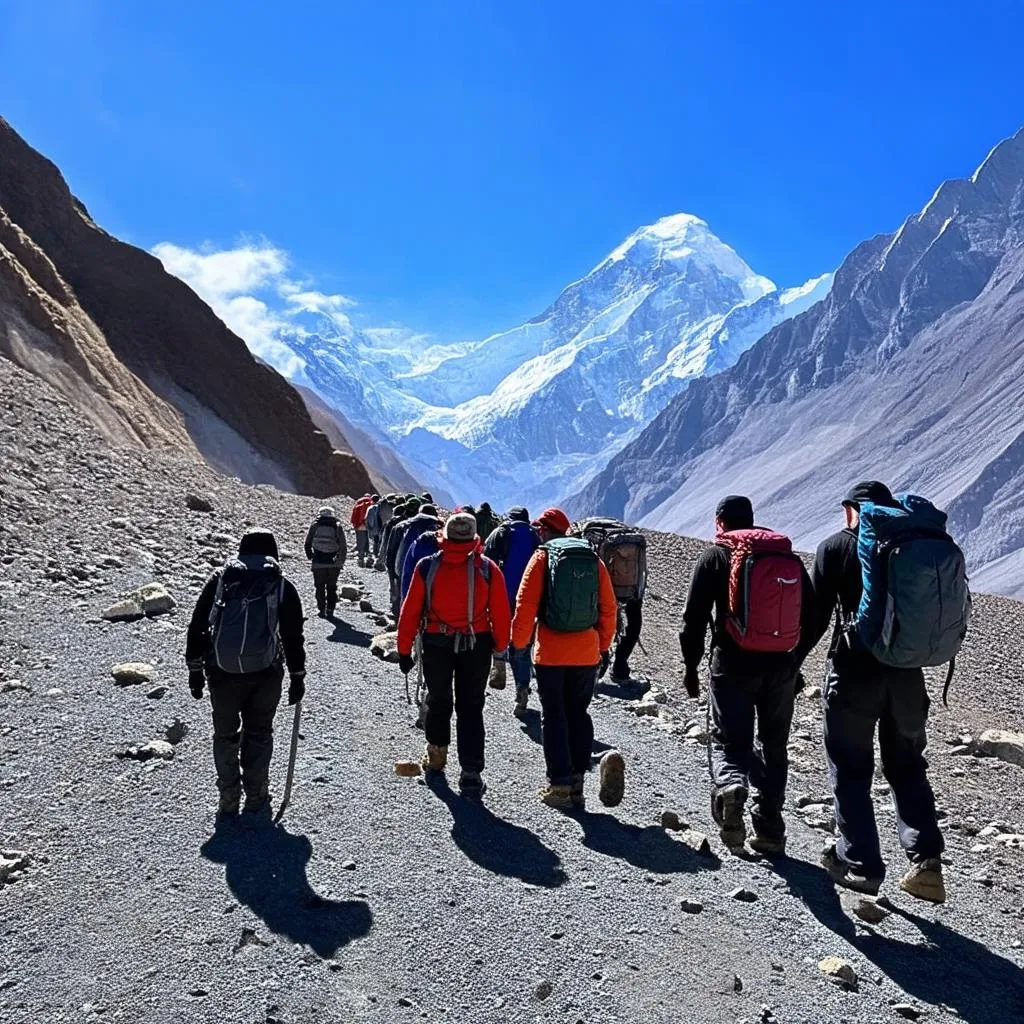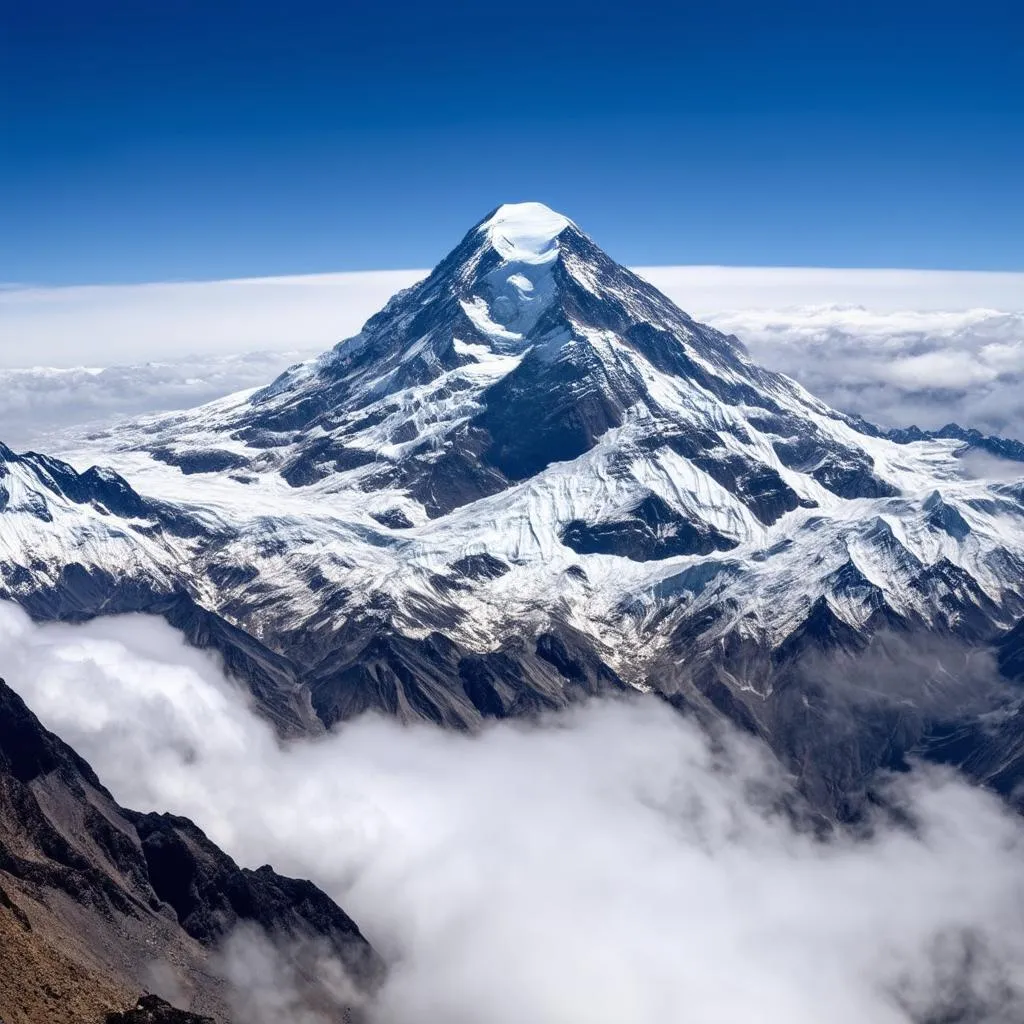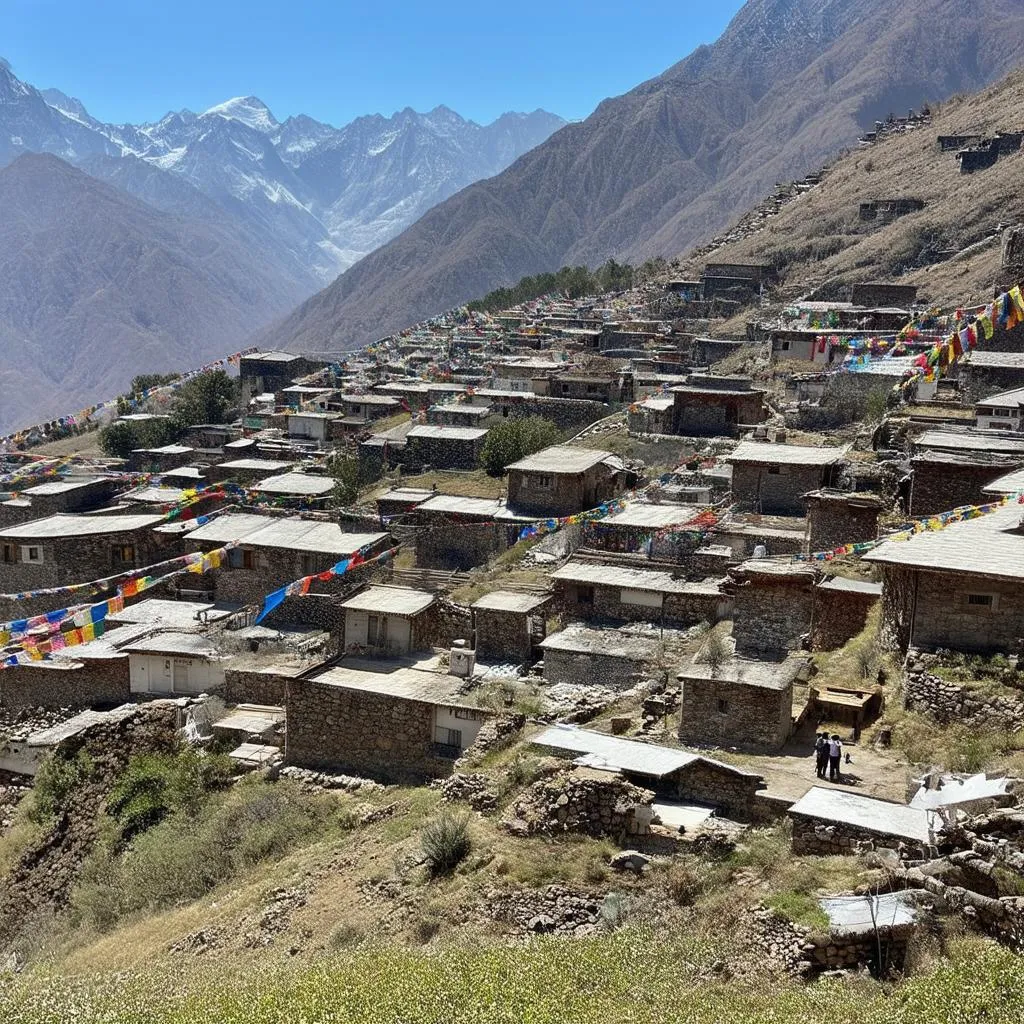Everest, the world’s highest mountain, has been an irresistible draw for adventurers and mountaineers for decades. The thought of standing atop the roof of the world, overlooking the vast expanse of the Himalayas, is a dream for many. But scaling Everest is a challenging endeavor, requiring meticulous planning, rigorous physical training, and a deep respect for the mountain’s unforgiving nature.
This guide will help you navigate the complexities of Everest trekking, providing you with the essential information and insights to make your journey a safe and rewarding experience.
What is Everest Trekking?
Everest trekking involves traversing the trails around Mount Everest in the Himalayas. It’s a journey of breathtaking beauty and cultural immersion, offering unique perspectives of the world’s highest peak. While not the same as summiting Everest, trekking through the Everest Base Camp offers an awe-inspiring experience, allowing you to witness the grandeur of the Himalayas without the extreme risks associated with climbing.
Why Choose Everest Trekking?
Everest trekking offers more than just stunning views. Here are some key reasons why it’s a popular choice:
- Unforgettable Scenery: The Himalayan landscapes are truly breathtaking, with snow-capped peaks, lush valleys, and diverse flora and fauna.
- Cultural Immersion: Trekking through the Sherpa villages provides opportunities to interact with local communities, learn about their traditions, and experience their warm hospitality.
- Physical Challenge: Trekking at high altitudes is a physically demanding activity, requiring a good level of fitness and endurance. It’s an excellent opportunity to push your limits and achieve personal goals.
- Spiritual Journey: The serenity of the mountains, the vastness of the sky, and the cultural significance of the region can evoke a sense of peace and spiritual connection.
Everest Trekking Routes:
- Everest Base Camp Trek: This classic trek is the most popular route, leading you to the foot of Mount Everest.
- Three Passes Trek: A more challenging trek that takes you over three high passes, including Cho La Pass and Renjo La Pass.
- Gokyo Valley Trek: This trek offers stunning views of the Everest region from the serene Gokyo Valley, with opportunities to see Gokyo Lake and Cho Oyu peak.
Planning Your Everest Trek:
1. Choose Your Trek Route: Select the route that best suits your fitness level and time constraints. Research the specific challenges of each route and ensure you have the necessary preparation.
2. Book Your Trip: Find a reputable trekking company that offers well-planned itineraries and experienced guides. They will handle logistics like permits, accommodation, and transportation.
3. Acclimatize Properly: High altitude can affect your body, so acclimatization is crucial. Allow sufficient time to adjust to the thinner air and avoid pushing yourself too hard during the first few days.
4. Pack Smartly: Pack light and bring only the essentials, focusing on warm, weatherproof clothing, trekking boots, and a backpack. Consider altitude sickness medication and essential medical supplies.
5. Stay Hydrated and Eat Well: Drink plenty of water and eat a balanced diet to maintain your energy levels and stay healthy.
6. Respect the Local Culture: Be mindful of local customs and traditions. Seek permission before taking photos of people, dress respectfully, and avoid loud behavior.
Everest Trekking Costs:
The cost of Everest trekking can vary depending on your choice of route, trekking company, and travel style. A typical Everest Base Camp trek can cost between $1,500 to $3,000 per person for a guided tour.
Tips for a Successful Everest Trek:
1. Prepare Physically: Train for several months before your trek, focusing on cardiovascular fitness, strength training, and hiking at elevation if possible.
2. Consult with a Doctor: Consult with your doctor to ensure you’re medically fit for high-altitude trekking.
3. Pack for all Weather: The weather in the Everest region can change rapidly. Be prepared for sunshine, rain, snow, and strong winds.
4. Stay Hydrated: Drink plenty of water, even when you don’t feel thirsty. Altitude can dehydrate you quickly.
5. Eat Regularly: Maintain your energy levels by eating regular meals. High-calorie snacks are helpful for replenishing energy during the trek.
6. Rest When You Need It: Don’t push yourself too hard. Listen to your body and rest when you feel tired or unwell.
7. Pack Altitude Sickness Medication: Be prepared for altitude sickness and have medication readily available.
8. Respect the Mountain: The Himalayas are sacred to local communities. Be respectful of the environment, avoid littering, and take only memories home.
9. Enjoy the Journey: Everest trekking is an incredible adventure. Savor the scenery, immerse yourself in the culture, and appreciate the journey.
Common Questions About Everest Trekking:
Q: What is the best time to trek Everest?
A: The best time to trek Everest is during the spring (March-May) and autumn (September-November) seasons when the weather is clear and pleasant.Q: How difficult is Everest trekking?
A: The difficulty level of Everest trekking varies depending on the route you choose. The Everest Base Camp trek is considered moderate to challenging, while the Three Passes trek is more strenuous.Q: What is the altitude of Everest Base Camp?
A: Everest Base Camp is located at an altitude of 5,364 meters (17,600 feet).Q: What is the best way to prepare for altitude sickness?
A: Acclimatize slowly, drink plenty of fluids, and eat a balanced diet. Consult with your doctor about altitude sickness medication.Q: Do I need a permit to trek Everest?
A: Yes, you will need a permit to trek in the Everest region. These permits can be obtained through your trekking company.
Travelcar.edu.vn: Your Partner in Exploring the World
As a leading provider of [LINK: https://travelcar.edu.vn/chuyen-du-lich-thu-vi/ | travel resources], Travelcar.edu.vn offers a wide range of information and services to help you plan your dream Everest trek. We have an extensive network of experienced trekking guides, reliable travel partners, and detailed resources to help you navigate the Everest region.
The Story of my Everest Trek:
In the spring of 2023, I embarked on a journey to Everest Base Camp. The trek was physically challenging, but the rewards were immeasurable. Standing at the foot of Mount Everest, surrounded by snow-capped peaks, was an awe-inspiring experience. The serenity of the mountains, the colorful prayer flags fluttering in the wind, and the vibrant cultures of the Sherpa people left an indelible mark on my soul.
Feng Shui and Everest Trekking:
According to Feng Shui principles, mountains symbolize strength, stability, and protection. Trekking to Everest can be a powerful experience that aligns you with these energies. The high altitude, the vastness of the sky, and the presence of powerful natural forces can foster a sense of clarity, focus, and grounding.
Ready to Conquer the Roof of the World?
Everest trekking is an adventure that will stay with you forever. Let Travelcar.edu.vn help you plan your unforgettable journey to the Himalayas. [LINK: https://travelcar.edu.vn/gia-tua-du-lich/ | Explore our trekking packages], connect with our expert guides, and prepare for the journey of a lifetime.
 Trekking to Everest Base Camp
Trekking to Everest Base Camp
 Everest Summit
Everest Summit
 Sherpa Village
Sherpa Village
Don’t forget to share your own Everest trekking stories in the comments below! We’d love to hear about your experiences and tips for fellow travelers.